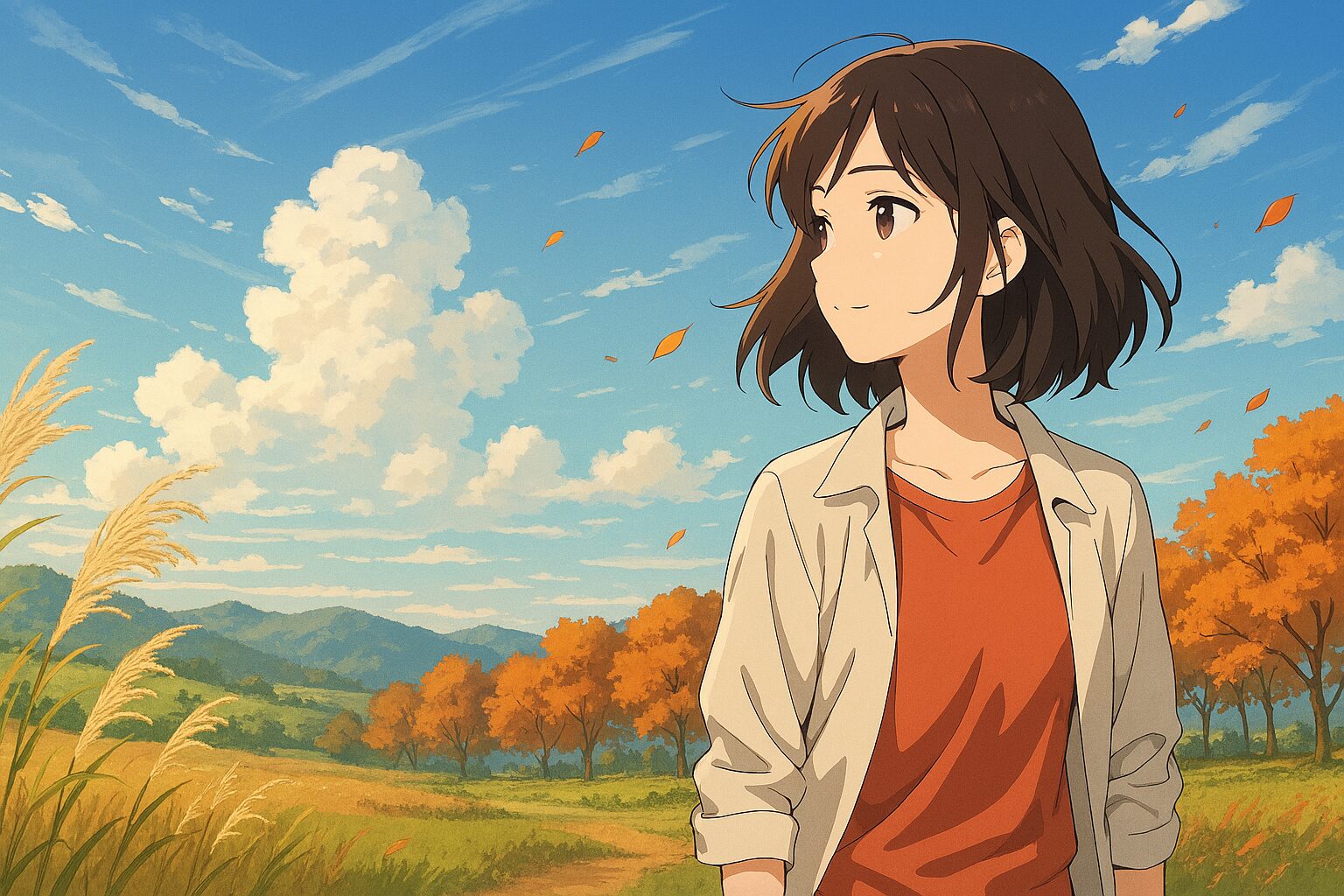An Invitation to Feel the Season Through Nature, Culture, and Sensory Beauty
- Introduction: “Autumn Has Officially Begun”?
- 🌿What Is Risshū? Understanding Japan’s Seasonal Calendar
- 🍃Sensing the Season: Nature’s Subtle Transitions
- 🏮Cultural Practices Around Risshū
- 🍵Seasonal Cuisine: A Bridge Between Summer and Autumn
- 🧘♀️Risshū and the Japanese Aesthetic of Transition
- 🌏Global Perspectives: What Risshū Offers the World
- ✨Conclusion: Finding Your Own Risshū
- 📌Internal Links
Introduction: “Autumn Has Officially Begun”?
In Japan, the term Risshū marks the beginning of autumn according to the traditional calendar. It falls around August 7th, even though the weather remains sweltering and cicadas still sing in full chorus.
Despite the heat, Risshū invites us to notice subtle shifts in nature—a gentle breeze at dusk, the shape of clouds, the sound of insects changing. It’s a moment that reflects the Japanese aesthetic of finding beauty in transition. This article explores Risshū through cultural traditions, seasonal foods, sensory experiences, and modern perspectives, offering global readers a poetic glimpse into Japan’s seasonal philosophy.
🌿What Is Risshū? Understanding Japan’s Seasonal Calendar
Japan’s traditional calendar divides the year into 24 solar terms (nijūshi sekki), based on the sun’s position. These terms guide agricultural life and seasonal customs.
| Solar Term | Meaning | Timing |
|---|---|---|
| Shōsho | Beginning of summer heat | Early July |
| Taisho | Peak of summer heat | Late July |
| Risshū | Start of autumn | Around August 7 |
| Shosho | Slight relief from heat | Late August |
Risshū signals the start of autumn, even if the temperature says otherwise. It’s a cultural cue to begin noticing the season’s shift—not through dramatic change, but through quiet nuance.
🍃Sensing the Season: Nature’s Subtle Transitions
Japanese culture places great value on perceiving seasonal change through the five senses:
- Sight: The sky grows higher, clouds take on autumnal shapes like cirrus or mackerel clouds.
- Sound: Cicadas fade, replaced by the gentle chirping of crickets and bell insects.
- Smell: The scent of grass and flowers begins to mellow.
- Touch: Morning and evening breezes feel cooler against the skin.
- Taste: Summer vegetables give way to autumn fruits and root vegetables.
These sensory shifts are not dramatic—but they are deeply felt. They invite reflection, awareness, and emotional connection to nature.
The Sound of Wind Chimes
Wind chimes (fūrin) are a classic summer symbol in Japan. As Risshū arrives, their sound takes on a wistful tone—still cooling, but tinged with the melancholy of summer’s end.
Explore the philosophy behind wind chimes in this related article: 👉 🍃The Healing Sound of Wind Chimes: Exploring Japan’s Philosophy of Summer Serenity
🏮Cultural Practices Around Risshū
Seasonal Greetings
In Japan, summer greetings shift with the calendar. Before Risshū, people send shochū mimai (summer letters). After Risshū, they switch to zansho mimai (late-summer letters). This subtle change reflects respect for seasonal transitions and cultural etiquette.
Preparing for Autumn
As Risshū arrives, people begin to prepare for autumn:
- Clothing shifts from light summer yukata to deeper-toned kimono.
- Cooling rituals like uchimizu (sprinkling water) give way to incense and moon-viewing.
- Summer festivals fade, and anticipation for autumn events like tsukimi (moon-viewing) and momijigari (autumn leaf hunting) begins.
These practices are not just functional—they cultivate emotional readiness for seasonal change.
🍵Seasonal Cuisine: A Bridge Between Summer and Autumn
Japanese cuisine reflects the season with precision and poetry. During Risshū, meals often blend summer freshness with autumn depth:
- Summer vegetables: eggplant, cucumber, tomato
- Autumn flavors: chestnut, pumpkin, pear, grape
- Wagashi (Japanese sweets): chilled kuzumochi and mizu-yōkan give way to chestnut buns and sweet potato confections
- Tea: barley tea and iced green tea transition to aromatic sencha and roasted hōjicha
Food becomes a sensory map of seasonal movement. For more on Japan’s summer food culture, read: 👉 The Essence of Japanese Summer’s Beauty, Challenges, and Survival
🧘♀️Risshū and the Japanese Aesthetic of Transition
Japanese aesthetics often celebrate impermanence—cherry blossoms falling, autumn leaves fading, snow melting. Risshū is part of this tradition. It teaches us to find beauty not in permanence, but in change.
To feel Risshū is to embrace the moment between seasons. It’s a quiet luxury: noticing the wind shift, the light soften, the flavors deepen. It’s a cultural mindfulness that invites us to live in harmony with nature.
🌏Global Perspectives: What Risshū Offers the World
In many countries, autumn begins with the equinox in late September. The idea of Risshū—marking autumn’s start in early August—may seem premature. But in a world facing climate change and seasonal disruption, Japan’s sensitivity to subtle transitions offers a valuable lesson.
Risshū is not just a date. It’s a mindset. It reminds us to observe, to feel, and to adapt.
✨Conclusion: Finding Your Own Risshū
Risshū invites us to pause and notice. It’s a moment to listen to wind chimes, watch the evening sky, and taste the shift in seasonal produce.
In a fast-paced world, this quiet awareness is a gift. It connects us to nature, to tradition, and to ourselves. Whether you live in Japan or elsewhere, you can find your own Risshū—a personal doorway into autumn’s gentle arrival.



コメント